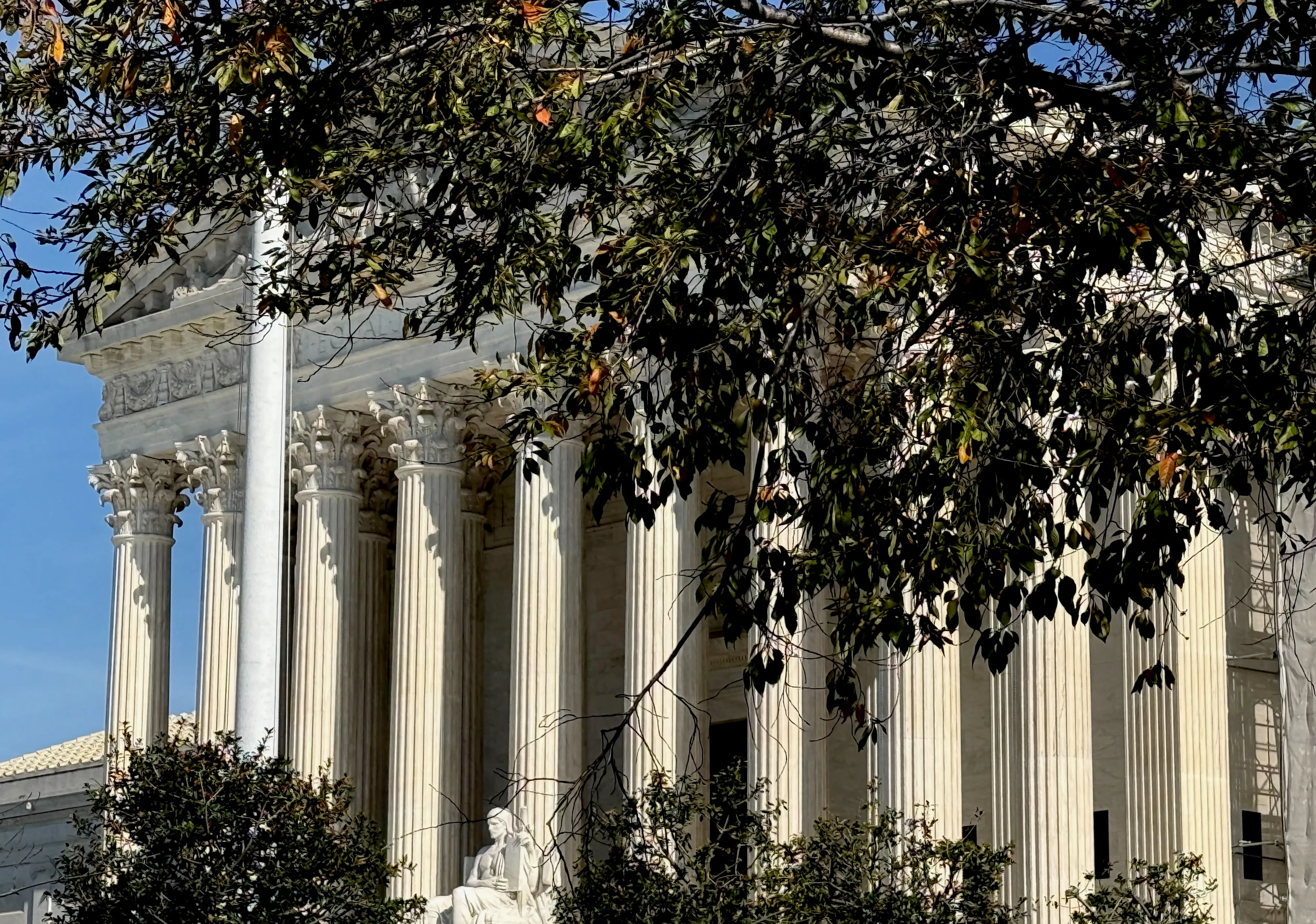The problem of “religion”


Rights and Responsibilities is a recurring series by Richard Garnett on legal education, the role of the courts in our constitutional structure, and the law of religious freedom and free expression.
Please note that the views of outside contributors do not reflect the official opinions of SCOTUSblog or its staff.
Our Constitution speaks, in two different places, about “religion.” It provides, in Article VI, that “religious” tests for federal public office are prohibited. (It is a not-so-fun fact that such tests existed and persisted for a while in several states.) And, of course, the First Amendment forbids Congress from making a “law respecting an establishment of religion” or “prohibiting the free exercise thereof.” Indeed, President Bill Clinton, more than 30 years ago, called the freedom of “religion” our “first freedom.” But what, exactly, are we talking about?
The Constitution itself does not provide a definition of “religion.” And more than a few forests have been felled by anthropologists, sociologists, historians, theologians, and law professors trying to find or construct one. This year, the Supreme Court also ventured into the definitional fire swamp, in a case called Catholic Charities Bureau v. Wisconsin Labor & Industry Review Commission. The decision was unanimous, but it would be a mistake to conclude that the questions raised – or, for that matter, the questions avoided – are easy ones.
By way of background: The state of Wisconsin, like most others and also like the federal government, provides an exemption for some religious organizations from paying into its unemployment-compensation program. The Wisconsin exemption is available to nonprofits that are “operated primarily for religious purposes” and “operated, supervised, controlled, or principally supported by a church or convention or association of churches.” However, the high court of Wisconsin decided that Catholic Charities – which, notice, has “Catholic” in its name – didn’t count, and wasn’t eligible for the exemption, because it isn’t (according to the court) “operated primarily for religious purposes.” Catholic Charities, in the court’s reasoning, does not fall within the “religious purposes” category because it doesn’t engage in “proselytization” or limit its social-welfare services to Catholics. Following the Good Samaritan’s example – unless accompanied by catechesis and Holy Communion – are, to the Wisconsin Supreme Court, “secular in nature.”
As Justice Sonia Sotomayor explained, and as all nine justices agreed, the state’s interpretation “grants a denominational preference by explicitly differentiating between religions based on theological practices” and makes eligibility for the exemption “turn[] on inherently religious choices.” Catholic Charities believes, because it is Catholic, that it should not condition works of mercy on a willingness to be proselytized; the Wisconsin court, in contrast, said that such evangelical leveraging is required for the truly religious. The court affirmed, though, that “‘[t]he clearest command of the Establishment Clause’ is that the government may not ‘officially prefe[r]’ one religious denomination over another” and “[a] law that differentiates between religions along theological lines is textbook denominational discrimination.”
The Supreme Court’s decision was correct. There are, as Sotomayor acknowledged, some “hard calls to make” when it comes to enforcing the First Amendment, “but this is not one.” (Full disclosure: I participated in an amicus curiae brief supporting Catholic Charities.) To be clear: the rule here is not that a religious exemption that affects religious traditions, institutions, or believers differently is necessarily suspect. Accommodations can be targeted and tailored; they just can’t be discriminatory. An exemption from, say, a generally applicable drug regulation for a religious group that uses the drug in its worship does nothing – nothing, that is, besides reflect a general commitment to religious liberty from which everyone, religious or not, benefits! – to help a religious group that doesn’t. Rather, all the court did was to invalidate a state law that identified some religious practices and commitments as not quite religious enough for Wisconsin. Again, not a “hard call.”
But the justices also didn’t tell Wisconsin, or the rest of us, what – for the purposes of American law – “religion” is. “Don’t define it discriminatorily” is sound advice but is still just a first step. What, again, are we talking about?
Those who drafted and ratified the Constitution and the Bill of Rights probably did not lose much sleep over this question. It seems likely that, to paraphrase Justice Potter Stewart’s 1964 observation about pornography, when it came to “religion,” they “knew it when they saw it.” An ancient derivation is from the Latin word religare, “to bind fast.” St. Augustine endorsed this etymology, and perhaps early Americans did, too. Probably, they would have reflexively and comfortably agreed with James Madison’s characterization, in his now-famous 1785 work “Memorial and Remonstrance,” of “religion” as “the duty which we owe to our Creator and the manner of discharging it.” Protestant Christianity was, no doubt, front of mind for most, but they were aware of other religions and definitely didn’t imagine that the Constitution’s religion-related rules encompassed Christianity only.
More than two centuries later, we lack a constitutionalized definition (although the Internal Revenue Service has identified more than a dozen criteria to employ when identifying tax-exempt “churches”). In a 1965 conscientious-objector case, United States v. Seeger, at least some of the justices gestured toward embracing the eminent Lutheran theologian Paul Tillich’s language of “ultimate concern” (or that which one “take[s] seriously without any reservation”), but, just a few years later, in Wisconsin v. Yoder, Chief Justice Warren Burger insisted that Henry David Thoreau’s “philosophical and personal” attachments to the isolation of Walden Pond didn’t rise to the religious. A lower federal court’s opinion, in the 1977 case of Malnak v. Yogi, identified three key markers of “religion” (being ultimate concerns, comprehensiveness of beliefs, and external signs, for those interested). This has been somewhat influential – in the legal academy, anyway, but not so much outside it or in the courts.
Now, maybe it is not such a big deal that we lack a legal definition of this notion, concept, idea, or thing that is, both historically and morally, inseparable from our tradition of judicially enforceable rights. After all, “liberty” and “equal protection” – like “speech,” “search,” and “seizure” – have contestable content, too. In the real world of lawsuits, judges can, and do, muddle through questionable and borderline cases or invoke such things as a “compelling government interest,” rather than confronting head-on the question whether a belief, commitment, claim, or practice is religious, secular – or just trolling. A court probably wouldn’t invest much theological energy in concluding that John Oliver’s “Our Lady of Perpetual Exemption” was, well, fake.
At the same time, we might well worry that our inability, or even our unwillingness, to define what that thing is which we are constitutionally locked in to protecting through the free-exercise guarantee and the no-establishment rule could make that thing more vulnerable or prevent us from adequately protecting that thing.
One possible way out of this difficulty, which many other political communities with younger constitutions have seized on, is to expand the thing-being-protected from “religion” to “conscience” or “belief.” In the United States, we have done this in various statutes and also in free-speech doctrine. However, at least for those who remain attached to the centrality of constitutional text in constitutional law, there is no getting away from the fact that our constitution speaks specifically, several times, of “religion.”
It is also not an option to say that, for constitutional purposes, “religion” means “true religion.” Even Madison’s definition of “religion” (as “the duty which we owe to our Creator and the manner of discharging it”) probably strikes many today as too narrow, or particularistic; it is exclusively theistic, for example, and its focus on “duty” would exclude many practices and everyday actions that seem part of “free exercise.” Think, again, of the day-to-day work of agencies like Catholic Charities.
Several prominent scholars and theorists have argued that the problem goes even deeper. Put aside, they say, the definitional, anthropological, and theological challenges. Whatever “religion” is, it is not so distinct from other things people care about as to call for or justify particular protection. It is not, as some put it, “special” – at least, not in a way that the law should care about. This position sits uneasily with the facts that, as was just noted, our constitution does single out religion and that pretty much the entire history of political theory in the West is the working out of the appropriate relationships between religious and political authorities, and between state power and religious conviction. At least in American law, religion is special, or special enough. (Kathleen Brady’s book, “The Distinctiveness of Religion in American Law,” is helpful here.)
Some may argue that this specialness is fading. And it is true that the “rise of the nones” is a now familiar, even if not completely understood, phenomenon. But the fact, at least for now, that more people than previously are reporting no religious affiliation or belief does not undermine the importance – indeed, the urgency – of continued, resolute devotion to the legal protection of religious freedom and of the appropriate independence of religious communities and institutions. This project was, and remains, essential to what John Witte calls “the American experiment” and it still adds, as Madison predicted it would, “lustre to our country.” That the task of defining “religion” is tricky – especially given our twin commitments to religious neutrality and respect for pluralism – cannot be an excuse for giving up on respecting and protecting whatever it is.
Posted in Recurring Columns, Rights and Responsibilities
Cases: Catholic Charities Bureau, Inc. v. Wisconsin Labor & Industry Review Commission